Gaza strip isolation.
March 30, 2009
CLOSED ZONE!
Posted by SOBERSWAN under VOODOO POLITICS | Tags: gaza strip, israel, politics, rights |Leave a Comment
November 28, 2008
Another opinion
Posted by SOBERSWAN under VOODOO POLITICS | Tags: america, carter, conspiracy, elections, global elite, mccain, obama, politics, presidency, trilateral commission |[4] Comments
Obama and McCain: Pawns of the Global Elite?
By Patrick Wood
August 5, 2008
An interesting article about how leadership plays with the hopes of people all around the globe!
Will it matter if Obama or McCain are elected in November? Hardly.
Both are rigidly backed by important members of the Trilateral Commission who hijacked the Executive Branch of the U.S. government starting in 1976 with the election of Jimmy Carter.
In Obama’s case, Zbigniew Brzezinski (co-founder of the Commission in 1973) is emerging as his principal advisor on foreign policy. Ex-Fed Chairman Paul Volker has made a once-in-a-lifetime, glowing endorsement of Obama. Madelyn Albright is seen sitting next to Obama in several conferences. Shoot, even Jimmy Carter himself endorses Obama. All are top members of the Commission.
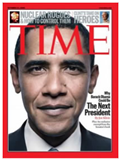
John McCain is being supported by several Trilateral Commission giants including: Henry Kissinger, George Schultz, Lawrence Eagleburger and Alexander Haig. All of these are ex-Secretaries of State who issued a joint endorsement of McCain early-on in his campaign.

And, unless Obama shoots both of his own feet (or…?) before the general presidential election in November, he is most likely to be the next president of the United States.
You would think that Americans would want to know who the “special interests” are that are embodied by this Trilateral Commission, and what they intend to do or not do with America.
What is the Trilateral Commission?
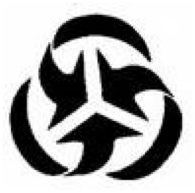
The Trilateral Commission was founded by the persistent maneuvering of David Rockefeller and Zbigniew Brzezinski in 1973. Rockefeller was chairman of the ultra-powerful Chase Manhattan Bank, a director of many major multinational corporations and “endowment funds” and had long been a central figure in the Council on Foreign Relations (CFR). Brzezinski, a brilliant prognosticator of one-world idealism, was a professor at Columbia University and the author of several books that have served as “policy guidelines” for the Trilateral Commission.
Brzezinski served as the Commission’s first executive director from its inception in 1973 until late 1976 when he was appointed by President Jimmy Carter as Assistant to the President for National Security Affairs.
The initial Commission membership was approximately three hundred, with roughly one hundred each from Europe, Japan and North America. Membership was also roughly divided between academics, politicians and corporate magnates; these included international bankers, leaders of prominent labor unions and corporate directors of media giants.
The word commission was puzzling since it is usually associated with instrumentalities set up by governments. It seemed out of place with a so-called private group unless we could determine that it really was an arm of a government – an unseen government, different from the visible government in Washington. European and Japanese involvement indicated a world government rather than a national government. We hoped that the concept of a sub-rosa world government was just wishful thinking on the part of the Trilateral Commissioners. The facts, however, lined up quite pessimistically.
If the Council on Foreign Relations could be said to be a spawning ground for the concepts of one-world idealism, then the Trilateral Commission was the “task force” assembled to assault the beachheads. Already the Commission had placed its members in the top posts the U.S. had to offer.
Jimmy Carter: The first Trilateral president
President James Earl Carter, the country politician who promised, “I will never lie to you,” was chosen to join the Commission by Brzezinski in 1973. It was Brzezinski, in fact, who first identified Carter as presidential timber, and subsequently educated him in economics, foreign policy, and the ins-and-outs of world politics. Upon Carter’s election, Brzezinski was appointed assistant to the president for national security matters. Commonly, he was called the head of the National Security Council because he answered only to the president – some said Brzezinski held the second most powerful position in the U.S.

Carter’s running mate, Walter Mondale, was also a member of the Commission. (If you are trying to calculate the odds of three virtually unknown men, out of over sixty Commissioners from the U.S., capturing the three most powerful positions in the land, don’t bother. Your calculations will be meaningless.)
On January 7, 1977 Time Magazine, whose editor-in-chief, Hedley Donovan was a powerful Trilateral, named President Carter “Man of the Year.” The sixteen-page article in that issue not only failed to mention Carter’s connection with the Commission but also stated the following:
“As he searched for Cabinet appointees, Carter seemed at times hesitant and frustrated disconcertingly out of character. His lack of ties to Washington and the Party Establishment – qualities that helped raise him to the White House – carry potential dangers. He does not know the Federal Government or the pressures it creates. He does not really know the politicians whom he will need to help him run the country.”
Was this portrait of Carter as a political innocent simply inaccurate or was it deliberately misleading? By December 25, 1976 – two weeks before the Time article appeared – Carter had already chosen his cabinet. Three of his cabinet members – Cyrus Vance, Michael Blumenthal, and Harold Brown – were Trilateral Commissioners; and the other non-Commission members were not unsympathetic to Commission objectives and operations. In addition, Carter had appointed another fourteen Trilateral Commissioners to top government posts, including:
* C. Fred Bergsten (Under Secretary of Treasury)
* James Schlesinger (Secretary of Energy)
* Elliot Richardson (Delegate to Law of the Sea)
* Leonard Woodcock (Chief envoy to China)
* Andrew Young (Ambassador to the United Nations).
As of 25 December 1976, therefore, there were nineteen Trilaterals, including Carter and Mondale, holding tremendous political power. These presidential appointees represented almost one-third of the Trilateral Commission members from the United States. The odds of that happening “by chance” are beyond calculation!
Realities of the New World Order
In 1972, Brzezinski’s wrote that “nation-state as a fundamental unit of man’s organized life has ceased to be the principal creative force: International banks and multinational corporations are acting and planning in terms that are far in advance of the political concepts of the nation-state.”
The late Senator Barry Goldwater (R-AZ) was one of a very few people who understood what Brzezinski was alluding to, when he issued a clear and precise warning in his 1979 book, With No Apologies:
“The Trilateral Commission is international and is intended to be the vehicle for multinational consolidation of the commercial and banking interests by seizing control of the political government of the United States. The Trilateral Commission represents a skillful, coordinated effort to seize control and consolidate the four centers of power – political, monetary, intellectual and
Trilateral Entrenchment: 1980-2008
Every Administration since Carter has had top-level Trilateral Commission representation through the President or Vice-President, or both! George H.W. Bush, Bill Clinton, Al Gore and Dick Cheney are all members.
In turn, these have appointed their Trilateral cronies to top positions in their Administrations.
For instance, six out of seven World Bank presidents have been members of the Commission. Eight out of ten USTR’s (U.S. Trade Representative) have been members.
Secretaries of State include Henry Kissinger, Cyrus Vance, Alexander Haig, George Schultz, Lawrence Eagleburger, Warren Christopher and Madeleine Albright. Yep, all members of the Trilateral Commission.
Follow the money, follow the power
You decide which is scarier: Obama and Brzezinski or McCain and Henry Kissinger?
Either way, Americans will continue to lose…
Every major crisis we face today is directly attributable to policies put forth and executed by members of this Trilateral Commission: Banking/lending/mortgage crisis, energy/gas price crisis, food/shortage/price crisis.
In addition, in the last fifteen to twenty years we have lost of millions of prime manufacturing jobs to China, India and Mexico. Our prime assets are being purchased by sovereign wealth funds and foreign investors. Our currency has all but been destroyed throughout the world.
Remember Brzezinski’s vision that “international banks and multinational corporations are acting and planning in terms that are far in advance of the political concepts of the nation-state”?
Well, that’s been true enough. But, for all their acting and planning at the expense of our own prosperity and Sovereignty, who wants or needs more of the same under Obama or McCain? With friends like this, who needs enemies?
For several Presidential elections now, this writer has voted according to the philosophy of voting for the “lesser of two evils.” Never again!
A vote for either Obama or McCain is a vote for the complete destruction of America!
November 19, 2008
OBAMANIA
Posted by SOBERSWAN under PRESS ROOM | Tags: america, elections, obama, politics, president, usa, vote |1 Comment
As a result of OBAMANIA;
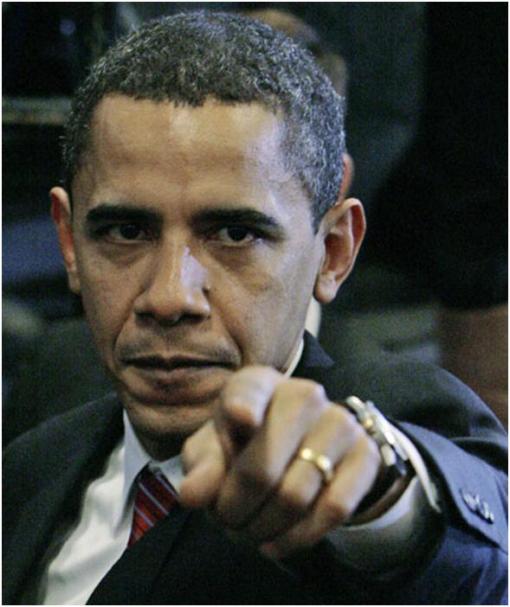
Did YOU vote for OBAMA?
*Does not really matter; We’re waiting for a change, right?
Let’s see…
November 2, 2008
ANSWER THE QUESTIONS
Posted by SOBERSWAN under PRIVATE | Tags: economy, financial crisis, ironic, politics |1 Comment

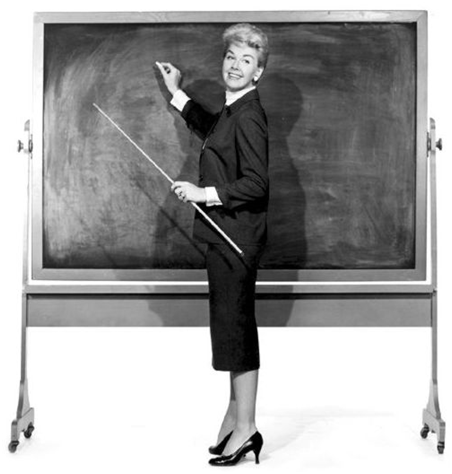
![]()
- Is financial crisis a hoax?
- Who is Mr Dow Jones?
- Why everybody leans on banks?
- Why we have bank economies?
- Why Israeli economy isn’t ” infected ” ?
- Why Russia is a superpower out of nothing?
- How does geopolicy work?
- Who’s gonna pay me tomorrow?
- Why don’t they all go to hell?
May 5, 2008
FRIENDS OF AMERIKA
Posted by SOBERSWAN under VOODOO POLITICS | Tags: amerika, imperialism, politics |[4] Comments
THE MAGIC NUMBER HERE IS “6”.
A country-friend of Amerika (amerikan policy) must
- provide amerikan advantages at any cost.
- establish amerikan outposts in its own territory.
- buy only amerikan products (from panties to energy and military equipment).
- leave Amerika take care of its policy.
- show loyalty to Uncle Sam.
- give h*** to Uncle Sam.
Or…
Get ready to face the consequences.
REMEMBER IMPERIALISTIC WARS OVER THE LAST 45-50 YEARS, HOW THEY STARTED, HOW THEY ENDED UP AND WHAT’S THE LEGACY.
*spelling
Ameri*k*a is the german spelling of the word just to show this fascist policy.
April 6, 2008
A living failure
Posted by SOBERSWAN under VOODOO POLITICS | Tags: america, bush, fail, failure, politics, president |Leave a Comment
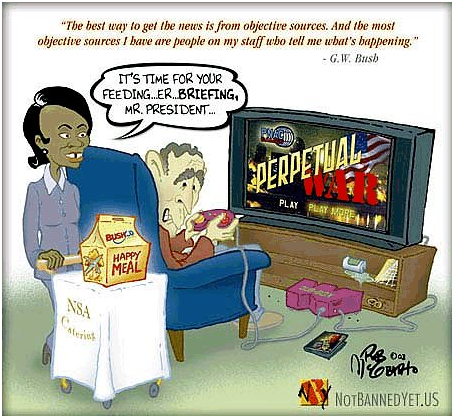
No doubt…

Yes indeed…
…AND NO NEED FOR FURTHER COMMENTS.
April 2, 2008
CHINESE DEMOCRACY
Posted by SOBERSWAN under VOODOO POLITICS | Tags: beijing, china, democracy, news, olympic games, politics, tibet |[3] Comments

These 4″ x 5″ stickers, purposely designed in preparation for the 2008 Beijing Olympics, send an unequivocal message to Beijing about China’s occupation of Tibet.
March 27, 2008
KAL 007 and Iran Air 655
Posted by SOBERSWAN under VOODOO POLITICS | Tags: aircrash, america, coverage, government, iran, iran air 655, kal 007, korea, politics, russia, war |[7] Comments
KAL 007 and Iran Air 655
Comparing the Coverage

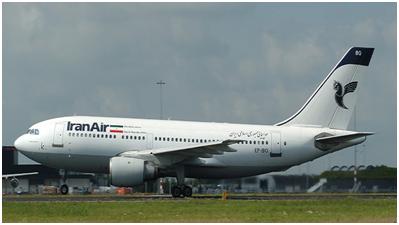
A very interesting article about the famous KAL 007 and IRAN AIR 655 tragedies and why governmenental coverage is a scientific method.
BY NORMAN SOLOMON
The day after a Soviet interceptor plane blew up a Korean passenger jet, the first sentence of a New York Times editorial (9/2/83) was unequivocal: “There is no conceivable excuse for any nation shooting down a harmless airliner.” Headlined “Murder in the Air”, the editorial asserted that “no circumstance whatever justifies attacking an innocent plane.”
Confronted with the sudden reality of a similar action by the U.S. government, the New York Times inverted every standard invoked with righteous indignation five years earlier. Editorials condemning the KAL shoot down were filled with phrases like “wanton killing,” “reckless aerial murder” and “no conceivable excuse.” But when Iran Air’s flight 655 was blown out of the sky on July 3, excuses were more than conceivable – they were profuse.
Two days after the Iranian passenger jet went down in flames killing 290 people, the Times (7/5/88) editorialized that “while horrifying, it was nonetheless an accident.” The editorial concluded, “The onus for avoiding such accidents in the future rests on civilian aircraft: avoid combat zones, fly high, acknowledge warnings.”
A similar pattern pervaded electronic media coverage. In the aftermath of the KAL incident, America’s airwaves routinely carried journalistic denunciations. CBS anchor Dan Rather, for example, called it a “barbaric act.” No such adjectives were heard from America’s TV commentators when discussing the U.S. shoot down of a civilian jet.
As soon as the Iranian Airbus crashed into the Persian Gulf, the Reagan administration set out to discourage what should have been obvious comparisons between the Soviet Union’s tragic mistake and our tragic mistake. The New York Times and other media uncritically quoted the President’s July 4 resurrection of his administration’s timeworn deceit: “Remember the KAL, a group of Soviet fighter planes went up, identified the plane for what it was and then proceeded to shoot it down. There’s no comparison.”
Virtually ignored was a key finding of Seymour Hersh’s 1986 book The Target Is Destroyed — that the Reagan administration knew within days of the KAL shootdown that the Soviets had believed it to be a military aircraft on a spy mission. Soviet commanders had no idea that they were tracking a plane with civilians on board. The Times had acknowledged this long after the fact in an editorial, “The Lie That Wasn’t Shot Down” (1/18/88); yet when Reagan lied again, the failed again to shoot it down.
Instead, Times correspondent R.W. Apple, Jr. weighed in (7/5/88) with an analysis headlined, “Military Errors: The Snafu as History”. In his lead, Apple observed that “the destruction of an Iranian airliner…came as a sharp reminder of the pervasive role of error in military history.” The piece drew many parallels to the Iran jetliner’s tragic end – citing examples from the American Revolution, World War II and Vietnam – while ignoring the most obvious analogy. About the KAL 007 shootdown, Apple said not a word.
If anything, the recent tragedy was less defensible than the KAL disaster. The Iran Air jet went down in broad daylight, well within its approved commercial airline course over international waters, without ever having strayed into any unauthorized air space. In contrast, the Korean plane flew way off course, deep into Soviet territory above sensitive military installations, in the dead of night.
But, as with Washington’s policy-makers, the mass media was intent on debunking relevant comparisons rather than exploring them. The government’s public relations spin quickly became the mass media’s: A tragic mishap had occurred in the Persian Gulf, amid puzzling behavior of the passenger jet. Blaming the victim was standard fare, as reporters focused on the plight of U.S.S. Vincennes commander Capt. Will Rodgers III, whose picture appeared on tabloid covers (7/5/88) with bold headlines: “Captain’s Anguish” (Newsday) and “Captain’s Agony” (New York Post).
At the same time, U.S. journalists asserted that the Iranian government was eager to exploit its new propaganda advantage. Correspondent Tom Fenton informed viewers of the CBS Evening News (7/6/88) that Iran was intent on making sure the event would not slip from the world’s front pages; colleague Bert Quint followed up minutes later with a similar theme.
Sorely lacking from the outset was any semblance of soul-searching about the holier-than-Moscow Soviet-bashing that followed the KAL accident. The last thing that White House officials wanted was any such national self-examination. But we might have hoped for more independence from the U.S. media, which allowed their proclaimed precepts to spin 180 degrees in an instant, while discarding basic insights like the one expressed in a New York Times editorial six days after KAL 007 exploded (9/7/83): “To proclaim a ‘right’ to shoot down suspicious planes does not make it right to do so.”



